Search Result
Results for "
Microglia
" in MedChemExpress (MCE) Product Catalog:
2
Isotope-Labeled Compounds
| Cat. No. |
Product Name |
Target |
Research Areas |
Chemical Structure |
-
- HY-N3915
-
|
|
Others
|
Neurological Disease
Inflammation/Immunology
|
|
Futoquinol is a neolignan isolated from the dried aerial parts of Piper kadsura (Piperaceae). Futoquinol potently inhibits NO production in microglia cells. Futoquinol has anti-neuroinflammatory activities .
|
-

-
- HY-N10386
-
-
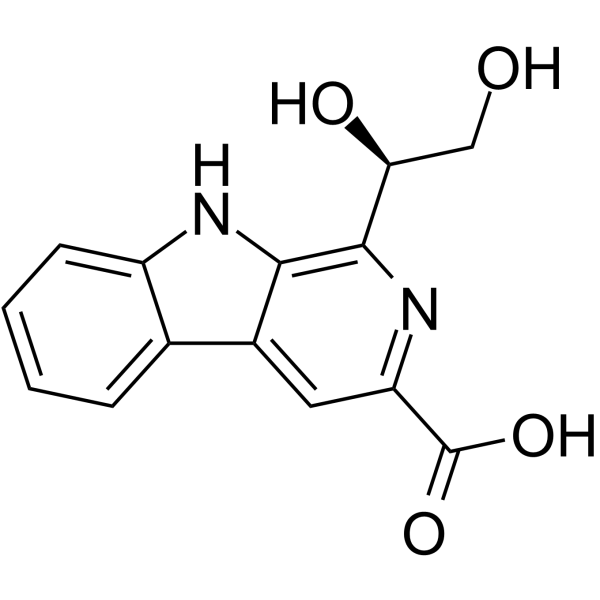
-
- HY-P5762
-
|
PNX-14
|
GnRH Receptor
|
Neurological Disease
|
|
Phoenixin-14 (PNX-14) is one of the endogenous active isoform, and generates anxiolytic effect via the activation of the AHA GnRH system in mice. Phoenixin-14 inhibits ischemia/reperfusion-induced cytotoxicity in microglia .
|
-
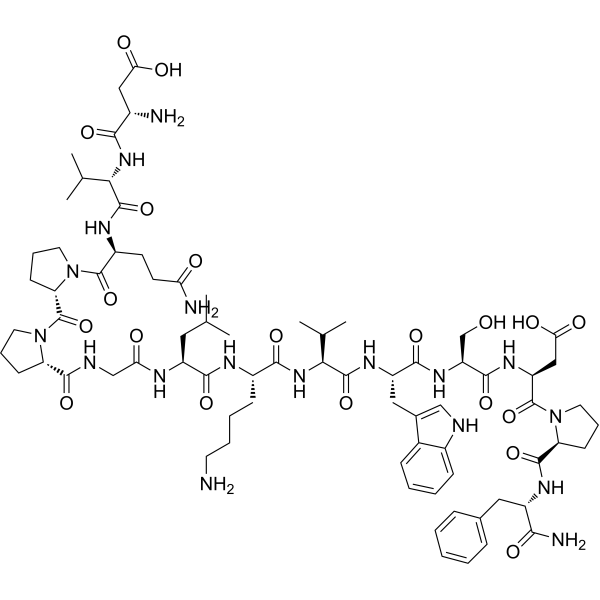
-
- HY-123506
-
|
|
Src
|
Neurological Disease
Inflammation/Immunology
|
|
Fenlean, a natural squamosamide derivative, is a Src tyrosine kinase inhibitor. Fenlean can inhibit over-activated microglia and protect dopaminergic neurons. Fenlean can attenuate neuroinflammation in Parkinson's disease models .
|
-
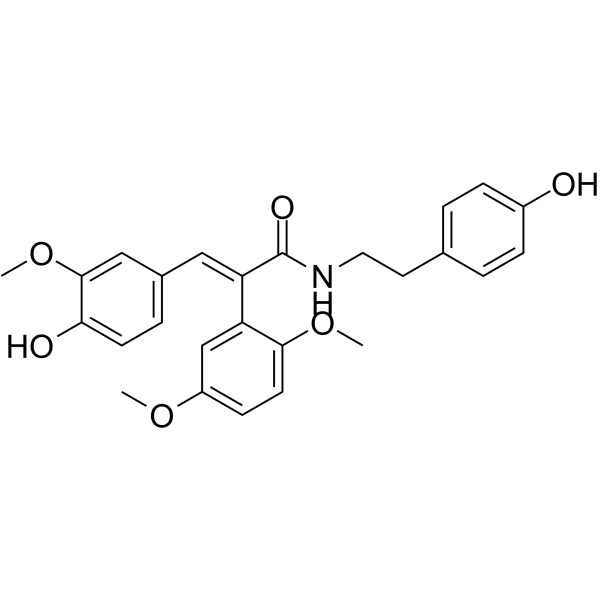
-
- HY-108654
-
|
|
P2Y Receptor
Apoptosis
|
Neurological Disease
|
|
PSB 0474 (3-phenacyl-UDP) is a selective and potent P2Y6 receptor agonist with an EC50 of 70 nM . PSB 0474 inhibits cell proliferation, increases NO release in astrocytes and microglia cells. PSB 0474 induces astrocytes apoptosis .
|
-

-
- HY-157430
-
|
|
Epigenetic Reader Domain
|
Neurological Disease
|
|
BET-IN-21 (compound 16) is a blood-brain barrier-permeable extra terminal domain (BET) inhibitor with the Ki of 230 nM. BET-IN-21 inhibits microglia activation and has ameliorative effects on experimental autoimmune encephalomyelitis mice .
|
-
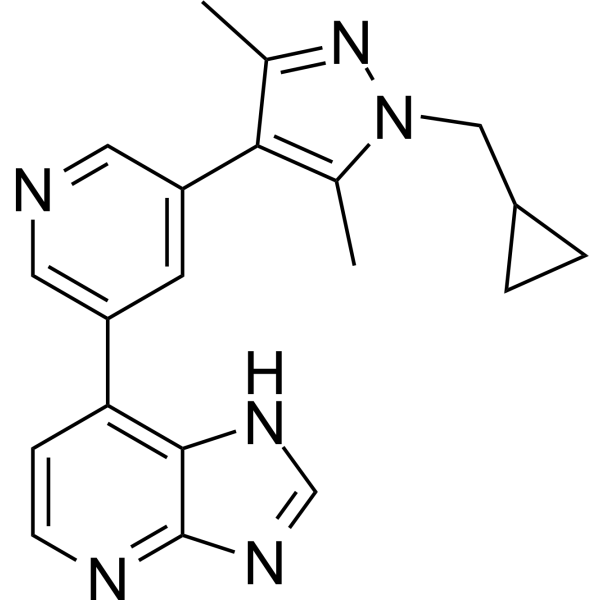
-
- HY-155762
-
-
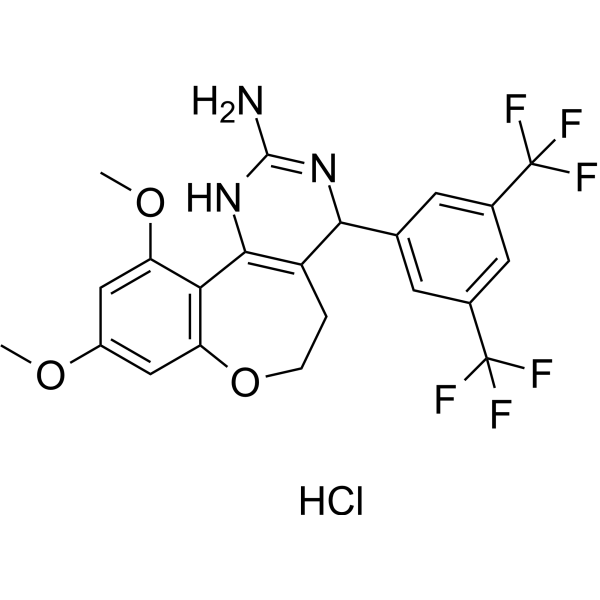
-
- HY-W670564A
-
|
|
Others
|
Neurological Disease
|
|
(4S)-10-Nor-calamenen-10-one (Compound 15) enhances LPS-induced NO production by microglia. (4S)-10-Nor-calamenen-10-one is an eudesmane sesquiterpene that can be isolated from Alpinia oxyphylla .
|
-
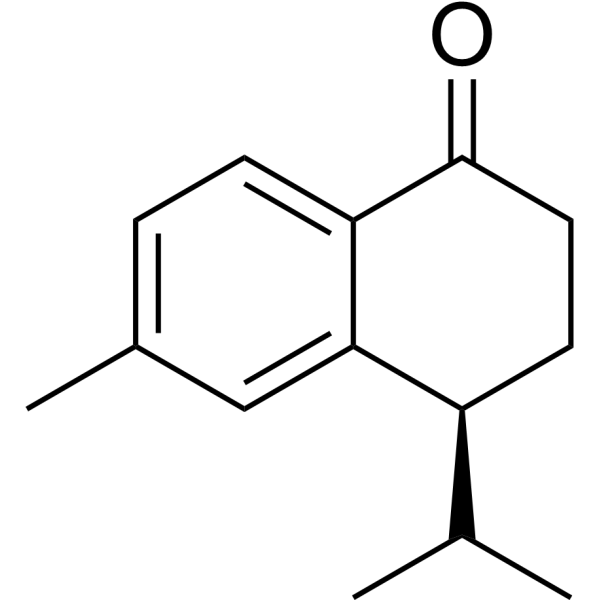
-
- HY-146765
-
|
|
NOD-like Receptor (NLR)
|
Neurological Disease
Inflammation/Immunology
|
|
AMS-17 is a potent NLRP3 inhibitor, inhibiting microglia activation in vitro and in vivo. AMS-17 also inhibits cytokines such as caspase-1, TNF-α, IL-1β and inducible nitric oxide synthase (iNOS) in N9 cells. AMS-17 can be used for researching inflammation-associated neurological disorders .
|
-

-
- HY-15381
-
|
FTY720 phosphate
|
LPL Receptor
|
Infection
Neurological Disease
Inflammation/Immunology
|
|
Fingolimod phosphate (FTY720 phosphate) is an orally active sphingosine 1-phosphate (S1P) receptor agonist. Fingolimod phosphate can promote the neuroprotective effects of microglia. Fingolimod phosphate can be used for the research of multiple sclerosis and neurologic diseases .
|
-
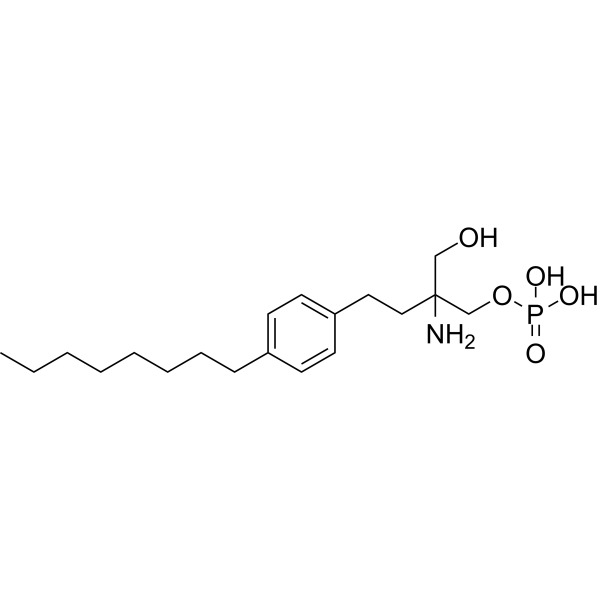
-
- HY-144399
-
|
|
Others
|
Neurological Disease
|
|
CD33 splicing modulator 1 (Compound 1) is a CD33 splicing modulator. CD33/Siglec 3 is a myeloid lineage cell surface receptor that is known to regulate microglia activity. CD33 splicing modulator 1 increases exon 2 skipping in cellular mRNA pools. CD33 splicing modulator 1 has the potential for the research of neurodegenerative disease including Alzheimer's disease .
|
-
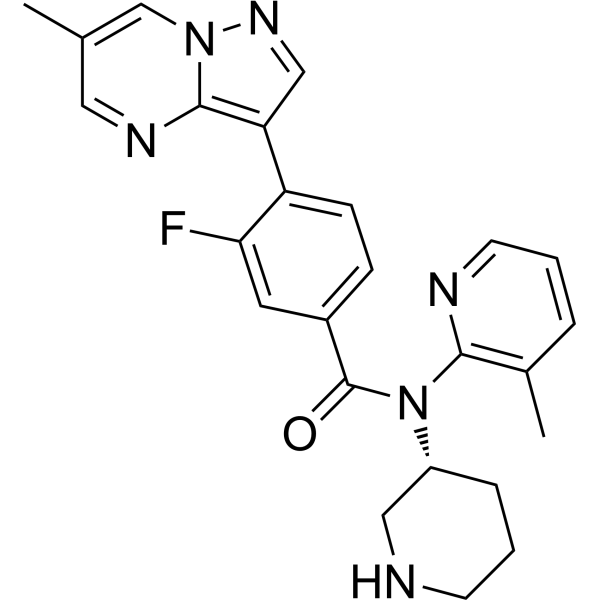
-
- HY-144399A
-
|
|
Others
|
Neurological Disease
|
|
CD33 splicing modulator 1 (Compound 1) hydrochloride is a CD33 splicing modulator. CD33/Siglec 3 is a myeloid lineage cell surface receptor that is known to regulate microglia activity. CD33 splicing modulator 1 hydrochloride increases exon 2 skipping in cellular mRNA pools. CD33 splicing modulator 1 hydrochloride has the potential for the research of neurodegenerative disease including Alzheimer's disease .
|
-
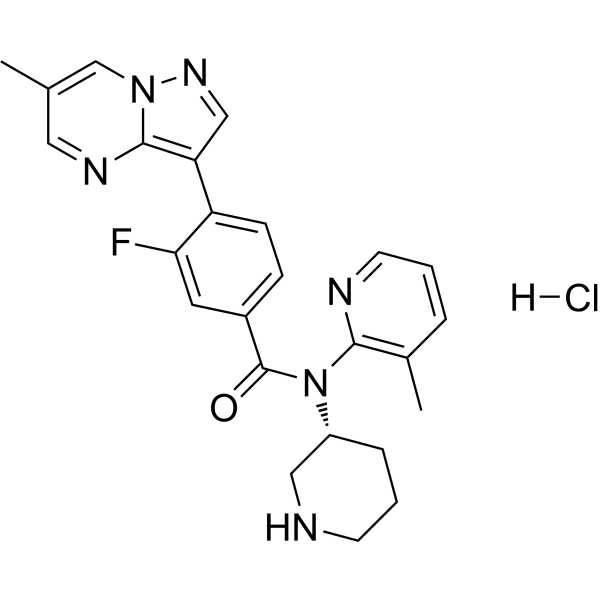
-
- HY-158155
-
|
|
Potassium Channel
|
Inflammation/Immunology
|
|
CVN293 is a selective and brain permeable potassium ion (K +) channel KCNK13 inhibtor with IC50s of 41 nM and 28 nM for hKCNK13 and mKCNK13, respectively. CVN293 potently inhibits the NLRP3-inflammasome mediated production of the proinflammatory cytokine IL-1β in microglia .
|
-
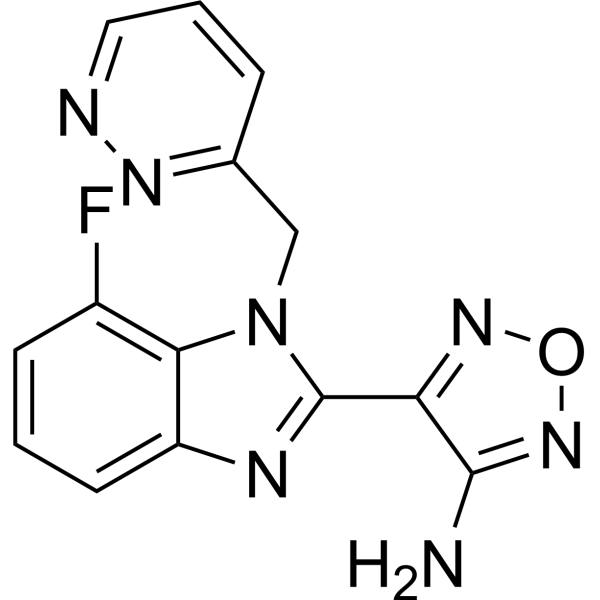
-
- HY-107541
-
O-1602
2 Publications Verification
|
GPR55
|
Neurological Disease
|
|
O-1602 is an agonist of GPR55 (G protein-coupled receptor 55). O-1602 reduces the number and activation of hippocampal microglia induced by METH (methamphetamine). O-1602 decreases the expression levels of NLRP3 inflammasome proteins, including NLRP3, ASC and Caspase-1 .
|
-
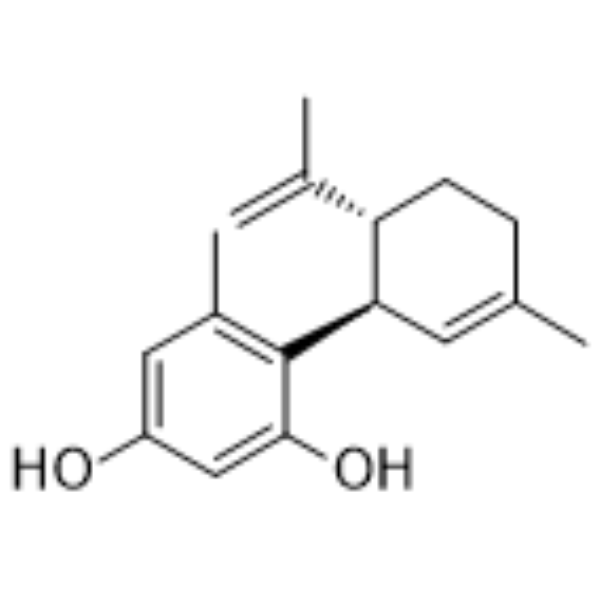
-
- HY-161510
-
|
|
Cannabinoid Receptor
|
Others
Neurological Disease
|
|
HU-308 is a highly selective CB2 receptor agonist belonging to the synthetic cannabinoid analogues. The affinity of HU-308 to CB2 receptor is more than 440 times higher than that of CB1 receptor. CB2 receptors are mainly distributed in immune cells and are responsible for regulating the immunosuppressive effects of the endocannabinoid system (ECS). HU-308 has anti-inflammatory, neuroprotective and bioactive properties that regulate microglia function. HU-308 can be used in the study of neuroinflammation and retinal diseases .
|
-

-
- HY-B1197
-
-

-
- HY-N10458
-
|
|
NF-κB
|
Inflammation/Immunology
|
|
Asperbisabolane L, a sesquiterpenoid, exerts the anti-inflammatory activity by inhibiting the NF-κB-activated pathway. Asperbisabolane L inhibits the translocation of NF-κB from cytoplasm to the nucleus. Asperbisabolane L also inhibits NO production in LPS-activated BV-2 microglia cells .
|
-
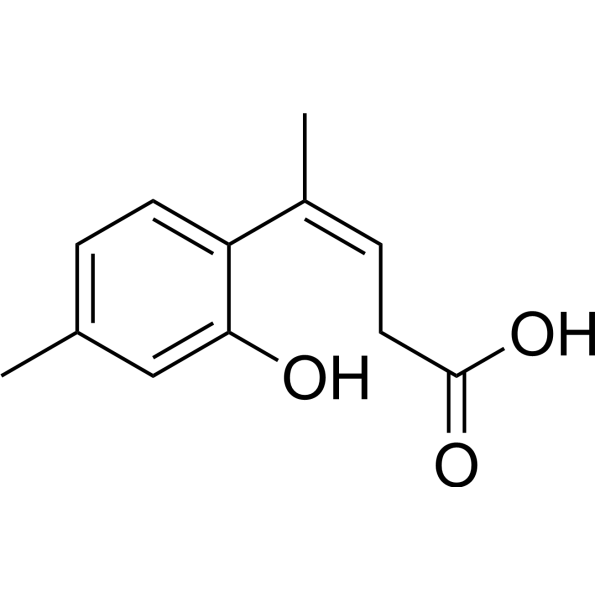
-
- HY-P5544A
-
|
N-Acetylmuramyl-L-Ala-γ-D-Glu-meso-diaminopimelic acid TFA
|
NOD-like Receptor (NLR)
|
Others
|
|
M-TriDAP (N-Acetylmuramyl-L-Ala-γ-D-Glu-meso-diaminopimelic acid) TFA is a NOD1/2 agoist and biological active peptide .
|
-
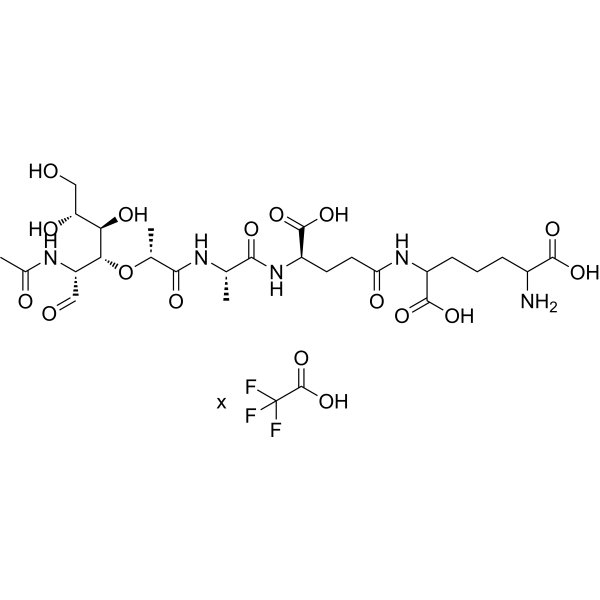
-
- HY-121035
-
|
7-Bromoindirubin-3-Oxime
|
CDK
GSK-3
|
Neurological Disease
|
|
7BIO (7-Bromoindirubin-3-Oxime) is the derivate of indirubin. 7BIO (7-Bromoindirubin-3-Oxime) has inhibitory effects against cyclin-dependent kinase-5 (CDK5) and glycogen synthase kinase-3β (GSK3β). 7BIO (7-Bromoindirubin-3-Oxime) inhibits Aβ oligomer-induced neuroinflammation, synaptic impairments, tau hyper-phosphorylation, activation of astrocytes and microglia, and attenuates Aβ oligomer-induced cognitive impairments in mice [1].
|
-
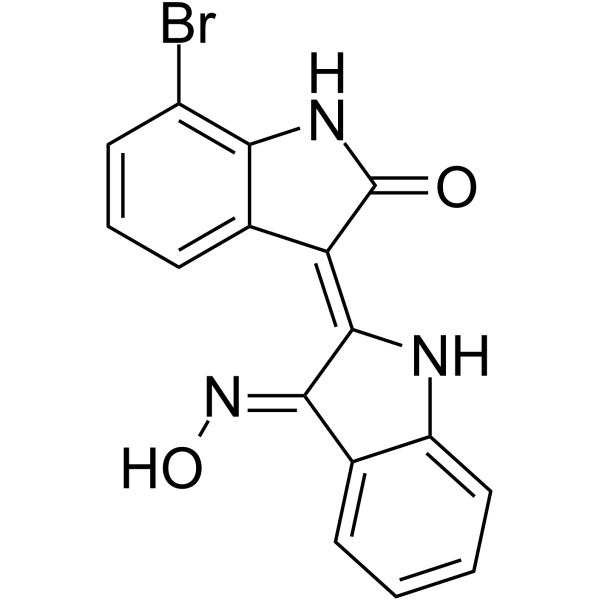
-
- HY-149246
-
|
|
Amyloid-β
Keap1-Nrf2
|
Neurological Disease
Inflammation/Immunology
|
|
Aβ-IN-6 reduces pro-inflammatory cytokine release from microglia cells. Aβ-IN-6 significantly induces Nrf2 nuclear translocation and hamperes Aβ oligomers formation. Aβ-IN-6 exerts a consistent neuroprotective effect by modulating the redox-sensitive signalling pathways in vivo oxidative stress model. Aβ-IN-6 is an orally active and has antiinflammatory, Antioxidant and Anti-oligomeric activity. Aβ-IN-6 has the potential for Alzheimer's disease (AD) research .
|
-

-
- HY-N7018
-
|
|
Others
|
Inflammation/Immunology
|
|
20-Hydroxyganoderic Acid G is a lanostane triterpenoid obtained from the EtOH extract of fruiting bodies of the Ganoderma curtisii. 20-Hydroxyganoderic Acid G inhibits BV-2 microglia cells activated by LPS with an IC50 of 21.33 μM. 20-Hydroxyganoderic Acid G has therapeutic potential in the agent discovery of nerve inflammation diseases associated with microglia activated by LPS .
|
-
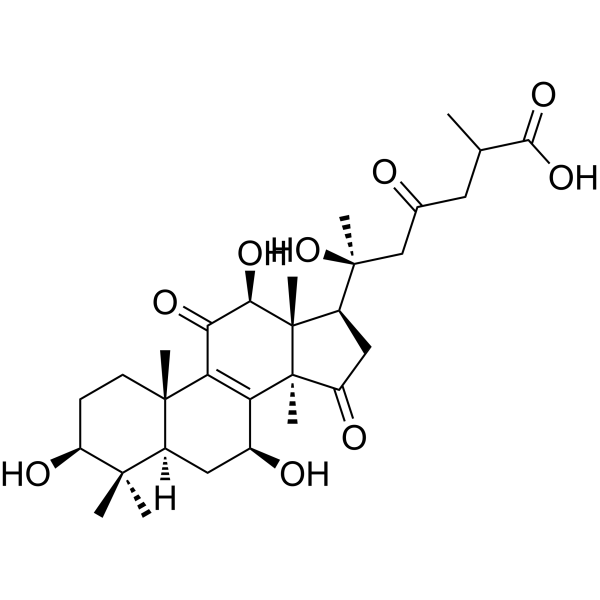
-
- HY-N10782
-
-
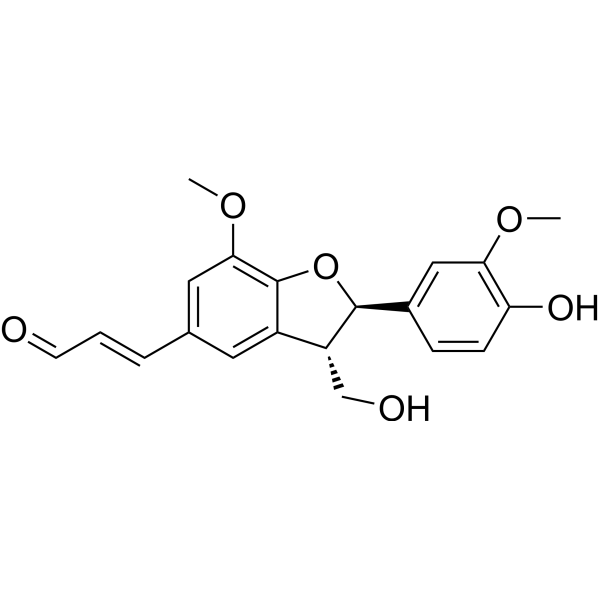
-
- HY-B0763S1
-
|
|
Isotope-Labeled Compounds
Phosphodiesterase (PDE)
|
Inflammation/Immunology
Cancer
|
|
Ibudilast-d7 is the deuterium labeled Ibudilast. Ibudilast (KC-404; AV-411; MN-166) is a cyclic AMP phosphodiesterase (PDE) inhibitor. Ibudilast has platelet anti-aggregatory effects. Ibudilast can be used for the research of asthma for its inhibitory effects on tracheal smooth muscle contractility. Ibudilast may be a useful neuroprotective and anti-dementia agent counteracting neurotoxicity in activated microglia[1].
|
-
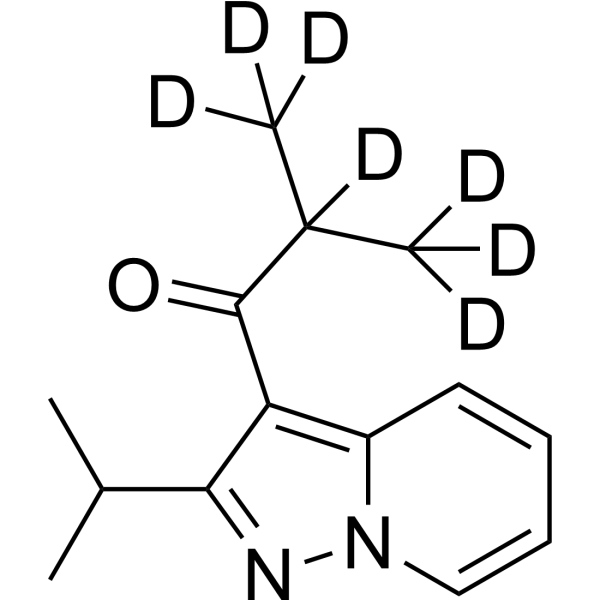
-
- HY-162020
-
-

-
- HY-N9675
-
|
|
NO Synthase
|
Inflammation/Immunology
|
|
(+)-Hannokinol can be isolated from AMOMUM TSAO-KO (ginger family) fruit. (+)-Hannokinol inhibits lipopolysaccharide-induced nitric oxide production in BV2 microglia .
|
-
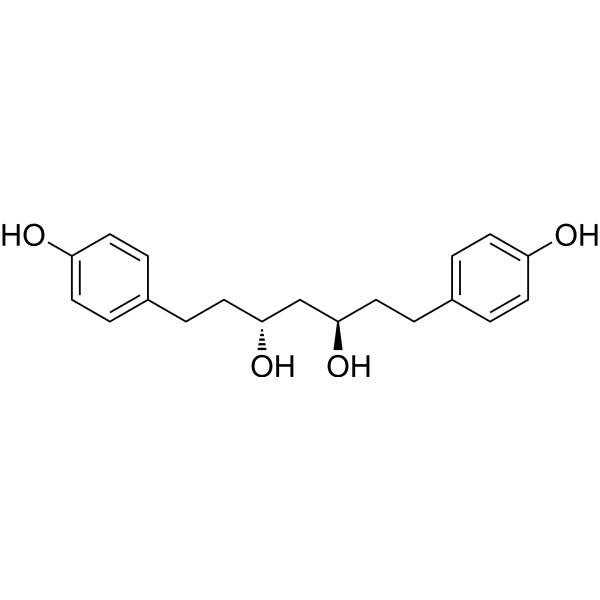
-
- HY-B0763S2
-
|
KC-404-d7-1; AV-411-d7-1; MN-166-d7-1
|
Phosphodiesterase (PDE)
|
|
|
Ibudilast-d7-1 is the deuterium labeled Ibudilast[1]. Ibudilast (KC-404;AV-411;MN-166) is a cyclic AMP phosphodiesterase (PDE) inhibitor. Ibudilast has platelet anti-aggregatory effects. Ibudilast can be used for the research of asthma for its inhibitory effects on tracheal smooth muscle contractility. Ibudilast may be a useful neuroprotective and anti-dementia agent counteracting neurotoxicity in activated microglia[2].
|
-

-
- HY-101860
-
-

-
- HY-112248A
-
-
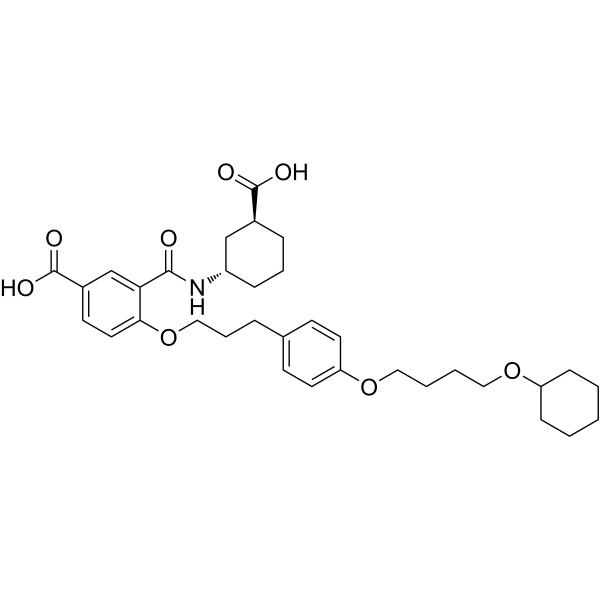
-
- HY-15515
-
SEA0400
Maximum Cited Publications
16 Publications Verification
|
Na+/Ca2+ Exchanger
|
Cardiovascular Disease
|
|
SEA0400 is a novel and selective inhibitor of the Na +-Ca 2+ exchanger (NCX), inhibiting Na +-dependent Ca 2+ uptake in cultured neurons, astrocytes, and microglia with IC50s of from 5 to 33 nM.
|
-

-
- HY-N6261
-
|
|
Others
|
Inflammation/Immunology
|
|
Epimagnolin B is a bisepoxylignan isolated from Magnolia fargesii, with anti-inflammatory activity and antiallergic effects. Epimagnolin B inhibits NO production in LPS-activated microglia. Epimagnolin B exhibited antiallergic effects .
|
-
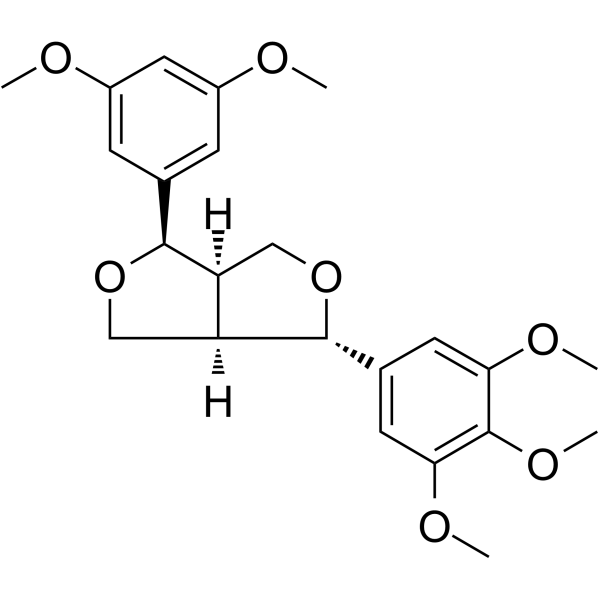
-
- HY-N8104
-
|
|
Others
|
Inflammation/Immunology
|
|
15a-Hydroxy-3,11,23-trioxo-lanost-8,20-dien-26-oic acid, a Lanostane triterpenoid, possesses NO production inhibitory activities of LPS-induced microglia .
|
-
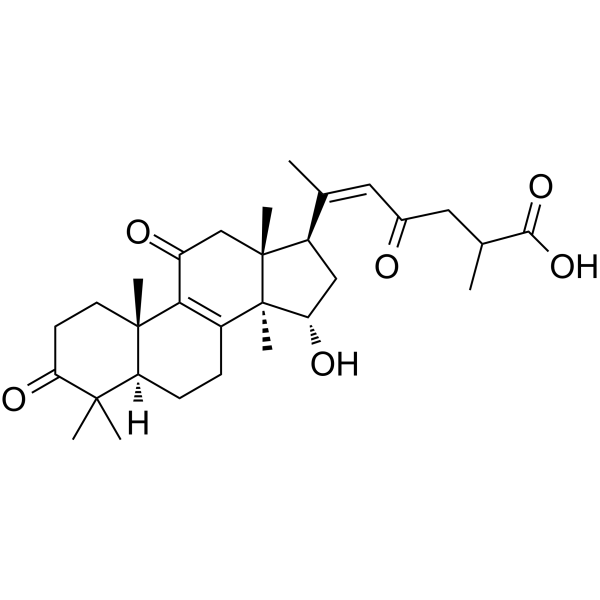
-
- HY-160842
-
|
|
c-Fms
|
Neurological Disease
|
|
CSF1R-IN-24 (Example 134) is an orally active CSF1R inhibitor. CSF1R-IN-24 significantly inhibits the survival of human ipSC-derived microglia (hiPSC-MG) .
|
-

-
- HY-112847
-
|
Sulfo-N-succinimidyl oleate
|
Mitophagy
|
Inflammation/Immunology
|
|
Sulfosuccinimidyl oleate (Sulfo-N-succinimidyl oleate) is a long chain fatty acid that inhibits fatty acid transport into cells. Sulfosuccinimidyl oleate is a potent and irreversible inhibitor of mitochondrial respiratory chain. Sulfosuccinimidyl oleate binds the CD36 receptor on the surface of microglia. Anti-inflammatory effect .
|
-
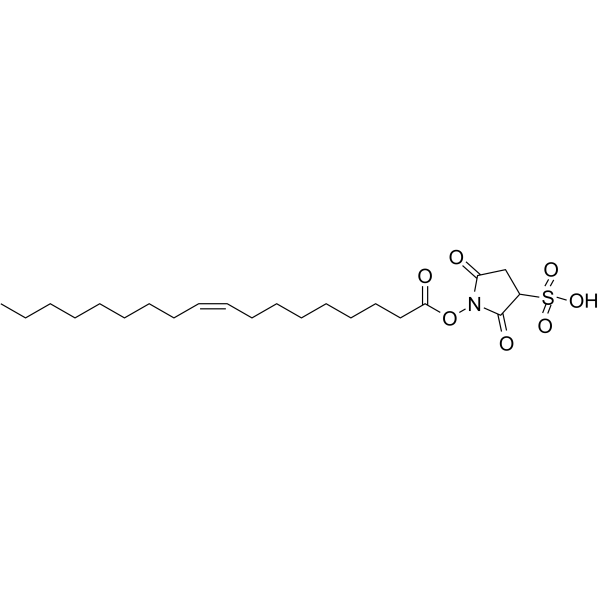
-
- HY-112847A
-
|
Sulfo-N-succinimidyl oleate sodium
|
Mitophagy
|
Inflammation/Immunology
|
|
Sulfosuccinimidyl oleate sodium (Sulfo-N-succinimidyl oleate sodium) is a long chain fatty acid that inhibits fatty acid transport into cells. Sulfosuccinimidyl oleate sodium is a potent and irreversible inhibitor of mitochondrial respiratory chain. Sulfosuccinimidyl oleate sodium binds the CD36 receptor on the surface of microglia. Anti-inflammatory effect .
|
-
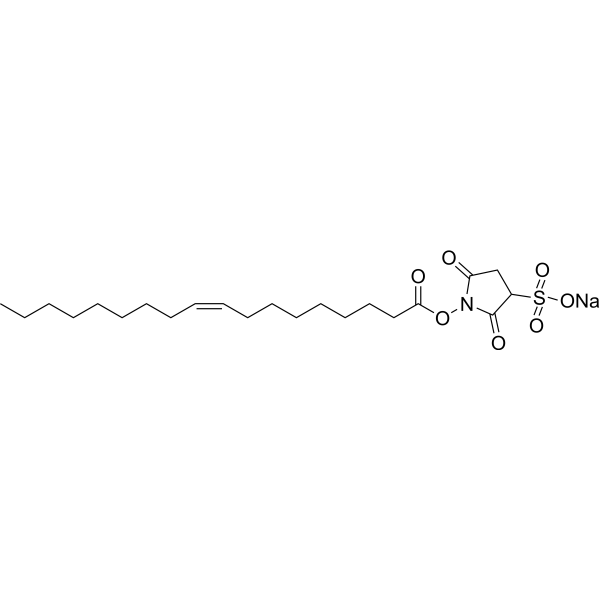
-
- HY-111815A
-
|
ac4CTP sodium
|
Endogenous Metabolite
|
Others
|
|
N4-Acetylcytidine triphosphate sodium is efficiently used as a substrate in T7 Polymerase-catalyzed in vitro
transcription and it can be incorporated into multiple templates .
|
-
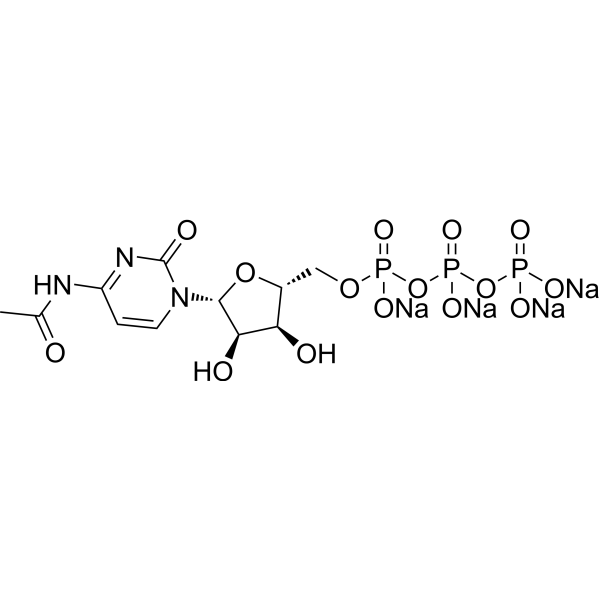
-
- HY-111815
-
|
ac4CTP
|
Endogenous Metabolite
|
Metabolic Disease
|
|
N4-Acetylcytidine triphosphate is efficiently used as a substrate in T7 Polymerase-catalyzed in vitro transcription and can be incorporated into multiple templates .
|
-

-
- HY-N0911
-
|
|
NF-κB
Apoptosis
p38 MAPK
|
Neurological Disease
|
|
Rehmannioside A is a neuroprotective agent that can be isolated from Rehmanniae radix. Rehmannioside A can inhibit the release of proinflammatory mediators from microglia and promote M2 polarization in vitro, thereby protecting co-cultured neurons from apoptosis by inhibiting NF-κB and MAPK signaling pathways. Rehmannioside A can be used in spinal cord injury research .
|
-

-
- HY-125859A
-
|
MPO
|
Bacterial
|
Inflammation/Immunology
|
|
Myeloperoxidase, human white blood cells (MPO) is a peroxidase. In Myeloperoxidase, human white blood cells mediate oxidative stress by promoting the production of reactive oxygen species (ROS) and active nitrogen (RNS), regulating the polarization and inflammation-related signaling pathways of microglia and neutrophils. Myeloperoxidase, human white blood cells has antibacterial activity .
|
-
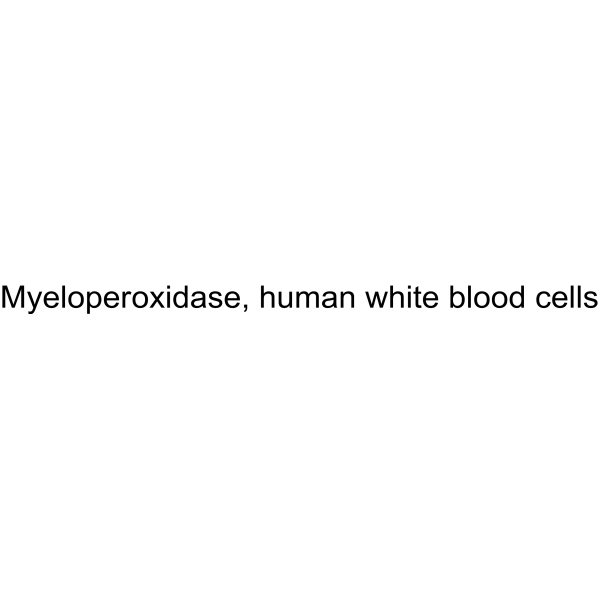
-
- HY-B0763
-
|
KC-404; AV-411; MN-166
|
Phosphodiesterase (PDE)
|
Inflammation/Immunology
Cancer
|
|
Ibudilast (KC-404; AV-411; MN-166) is a cyclic AMP phosphodiesterase (PDE) inhibitor. Ibudilast has platelet anti-aggregatory effects. Ibudilast can be used for the research of asthma for its inhibitory effects on tracheal smooth muscle contractility. Ibudilast may be a useful neuroprotective and anti-dementia agent counteracting neurotoxicity in activated microglia .
|
-
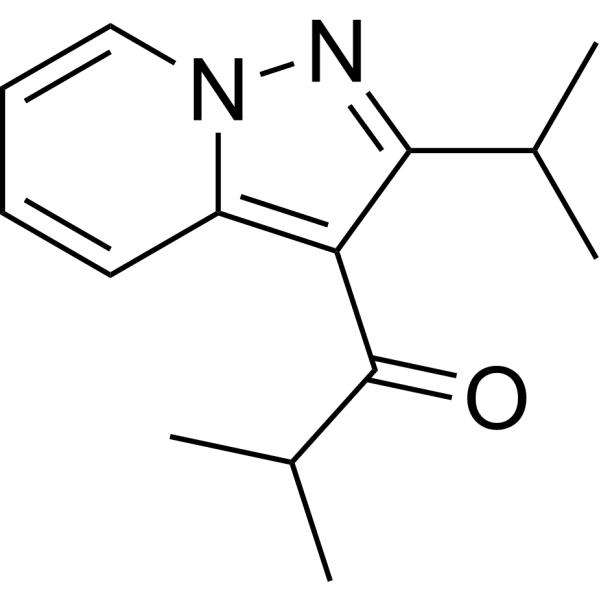
-
- HY-109192
-
|
SAR442168; PRN2246
|
Btk
|
Neurological Disease
|
|
Tolebrutinib (SAR442168) is a potent, selective, orally active and brain-penetrant inhibitor of Bruton tyrosine kinase (BTK), with IC50s of 0.4 and 0.7 nM in Ramos B cells and in HMC microglia cells, respectively. Tolebrutinib exhibits efficacy in central nervous system immunity. Tolebrutinib can be used for the research of multiple sclerosis (MS) .
|
-
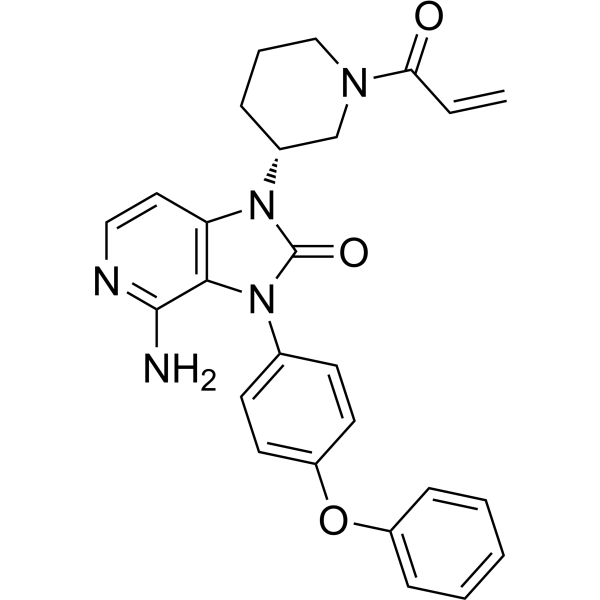
-
- HY-149143
-
|
|
TRP Channel
|
Inflammation/Immunology
|
|
JNJ-28583113 is an TRPM2 antagonist with brain permeability. JNJ-28583113 inhibits TRPM2 blocked phosphorylation of GSK3α and β subunits. JNJ-28583113 protects cells from oxidative stress induced cell death. JNJ-28583113 also suppresses cytokine release in response to pro-inflammatory stimuli in microglia .
|
-
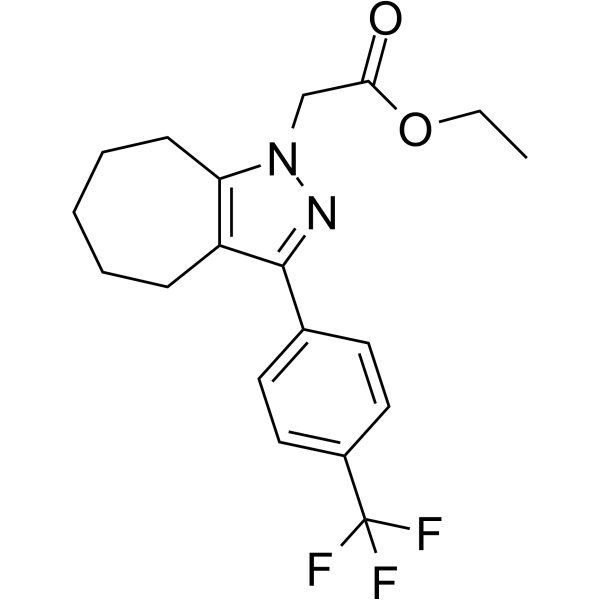
-
- HY-146086
-
|
|
Keap1-Nrf2
Reactive Oxygen Species
|
Neurological Disease
Inflammation/Immunology
|
|
Nrf2 activator-4 (Compound 20a) is a highly potent, orally active Nrf2 activator with an EC50 of 0.63 µM. Nrf2 activator-4 suppresses reactive oxygen species against oxidative stress in microglia. Nrf2 activator-4 effectively recovers the learning and memory impairment in a scopolamine-induced mouse model .
|
-

-
- HY-N3814
-
|
|
Others
|
Inflammation/Immunology
|
|
ent-16β,17-Dihydroxykauran-19-oic acid is an anti-inflammatory agent, which can be isolated from Siegesbeckia pubescens herb. ent-16β,17-Dihydroxykauran-19-oic acid inhibits lipopolysaccharide-induced nitric oxide production in BV2 microglia .
|
-

-
- HY-118828
-
|
12-OPDA
|
NF-κB
p38 MAPK
|
Neurological Disease
Inflammation/Immunology
|
|
12-Oxo phytodienoic acid (12-OPDA) is a plant lipid-derived anti-inflammatory compound. 12-Oxo phytodienoic acid suppresses neuroinflammation by inhibiting Nf-κB and p38 MAPK signaling in LPS-activated cells. 12-Oxo phytodienoic acid can be used for neurodegenerative diseases research .
|
-

-
- HY-N1485
-
|
Astramembrangenin; Cyclosieversigenin
|
Telomerase
|
Neurological Disease
Inflammation/Immunology
|
|
Cycloastragenol (Astramembrangenin), the active form of astragaloside IV, has anti-oxidant, anti-inflammatory, anti-aging, anti-apoptotic, and cardiovascular protective effects. Cycloastragenol is a potent telomerase activator and can lengthen telomeres. Cycloastragenol alleviates age-related bone loss and improves bone microstructure and biomechanical properties .
|
-

-
- HY-N3979
-
-
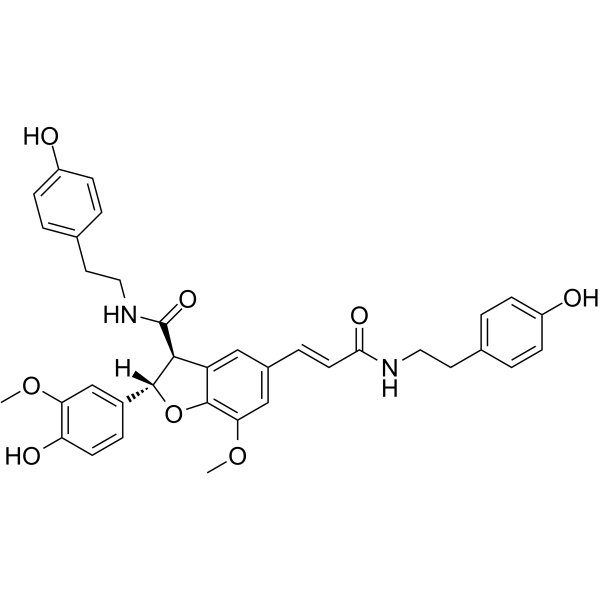
-
- HY-145990
-
|
MF6
|
FABP
|
Inflammation/Immunology
|
|
FABPs ligand 6 (MF6) is an FABP5 and FABP7 inhibitor with KD values of 874 nM and 20 nM, respectively. FABPs ligand 6 can be used for multiple sclerosis research .
|
-
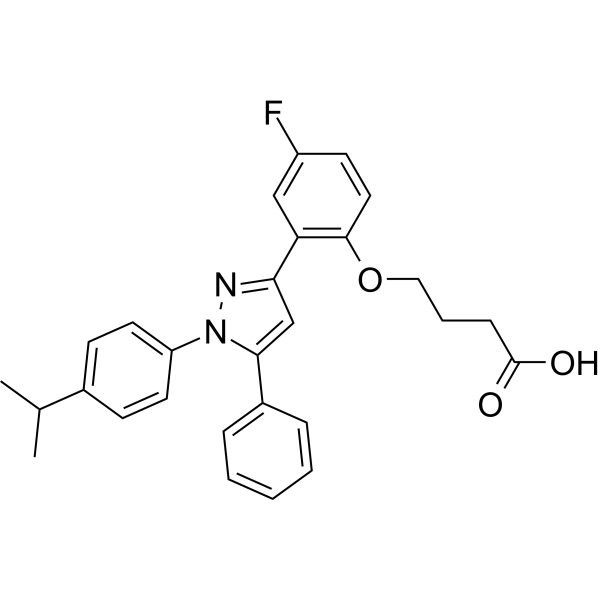
-
- HY-B0763R
-
|
|
Phosphodiesterase (PDE)
|
Inflammation/Immunology
Cancer
|
|
Ibudilast (Standard) is the analytical standard of Ibudilast. This product is intended for research and analytical applications. Ibudilast (KC-404; AV-411; MN-166) is a cyclic AMP phosphodiesterase (PDE) inhibitor. Ibudilast has platelet anti-aggregatory effects. Ibudilast can be used for the research of asthma for its inhibitory effects on tracheal smooth muscle contractility. Ibudilast may be a useful neuroprotective and anti-dementia agent counteracting neurotoxicity in activated microglia .
|
-

-
- HY-P3908
-
|
|
Amyloid-β
|
Neurological Disease
|
|
FITC-β-Ala-Amyloid β-Protein (1-42) ammonium is a FITC tagged Aβ1-42 monomer peptide. Aβ1-42 plays a key role in the pathogenesis of Alzheimer’s disease .
|
-

-
- HY-111351
-
-
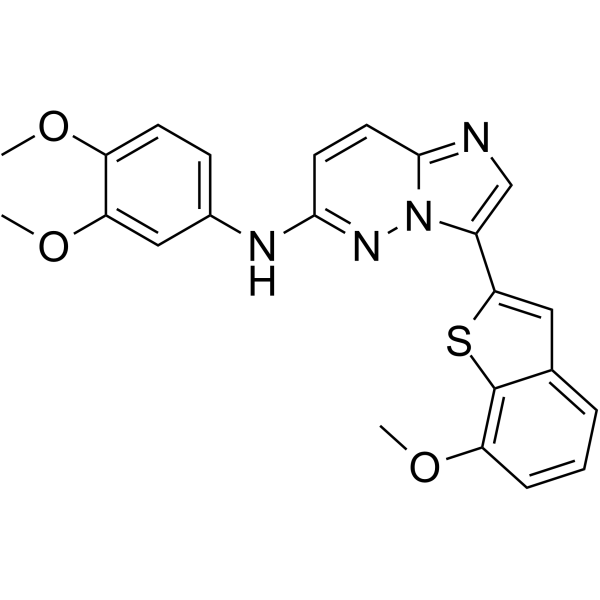
- HY-144765
-
|
|
NF-κB
Apoptosis
|
Neurological Disease
Inflammation/Immunology
|
|
NF-κB-IN-4 (compound 17) is a potent and BBB-penetrated NF-κB pathway inhibitor with blood brain barrier (BBB) permeability. NF-κB-IN-4 exhibits potential anti-neuroinflammatory activity with low toxicity. NF-κB-IN-4 can block the activation and phosphorylation of IκBα, reduce expression of NLRP3, and thus inhibit NF-κB activation. NF-κB-IN-4 can be used for neuroinflammation related diseases research .
|
-

- HY-149542
-
|
|
Tau Protein
Apoptosis
GSK-3
|
Neurological Disease
|
|
GSK-3β inhibitor 15 (Compound 54) is a GSK-3β inhibitor (IC50: 3.4 nM). GSK-3β inhibitor 15 inhibits Aβ1-42-induced GSK-3β and tau protein phosphorylation. GSK-3β inhibitor 15 inhibits LPS-induced iNOS expression. GSK-3β inhibitor 15 has neuroprotective effects on Aβ1-42-induced neurotoxicity. GSK-3β inhibitor 15 can be used for research of Alzheimer’s disease (AD) .
|
-
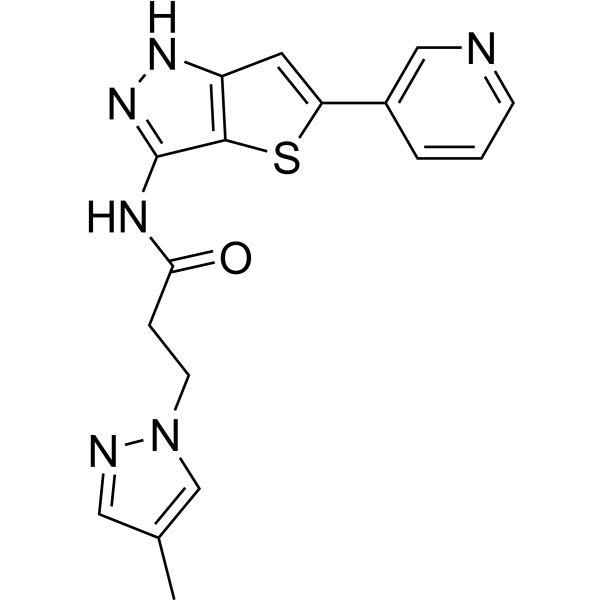
- HY-14728
-
|
R1439; RO0728804
|
PPAR
|
Metabolic Disease
|
|
Aleglitazar (R1439) is a potent dual PPARα/γ agonist, with IC50s of 38 nM and 19 nM for human PPARa and PPARγ, respectively. Aleglitazar can be used for the research of type II diabetes .
|
-
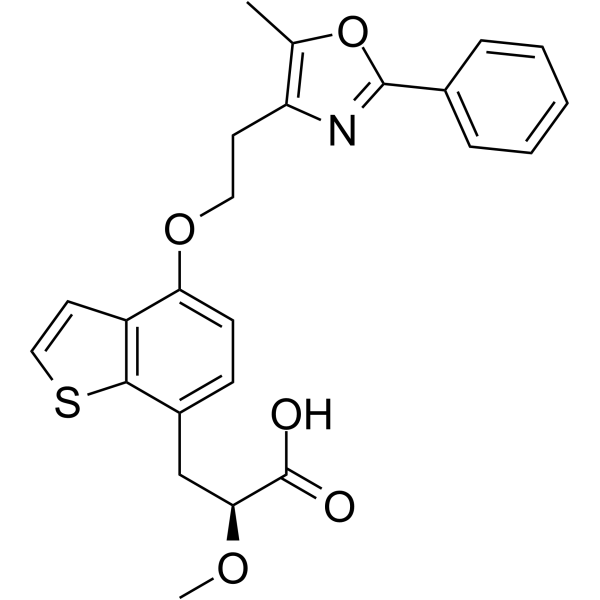
- HY-120160A
-
|
CP 86325 Sodium
|
PPAR
|
Neurological Disease
Metabolic Disease
|
|
Darglitazone Sodium, a thiazolidinedione, is an orally active, potent, and selective PPAR-γ (peroxisome proliferator-activated receptor) agonist. Darglitazone Sodium is effective in controlling blood glucose and lipid metabolism, and can be used for type II diabetes research .
|
-
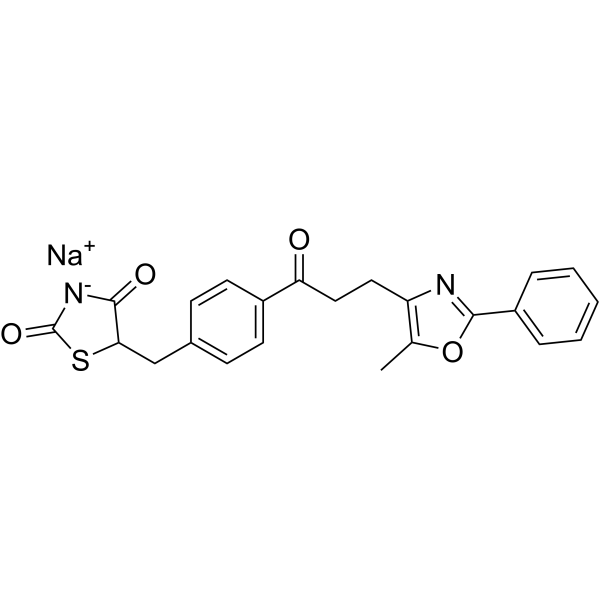
- HY-17447A
-
|
SKF 385 hydrochloride
|
Monoamine Oxidase
|
Neurological Disease
|
|
Tranylcypromine hydrochloride (SKF 385 hydrochloride) is an irreversible inhibitor of lysine-specific demethylase 1 (LSD1/BHC110) and monoamine oxidase (MAO). Tranylcypromine hydrochloride inhibits LSD1, MAO A and MAO B with IC50s of 20.7, 2.3 and 0.95 μM, respectively. Tranylcypromine hydrochloride can be used for the research of depression .
|
-
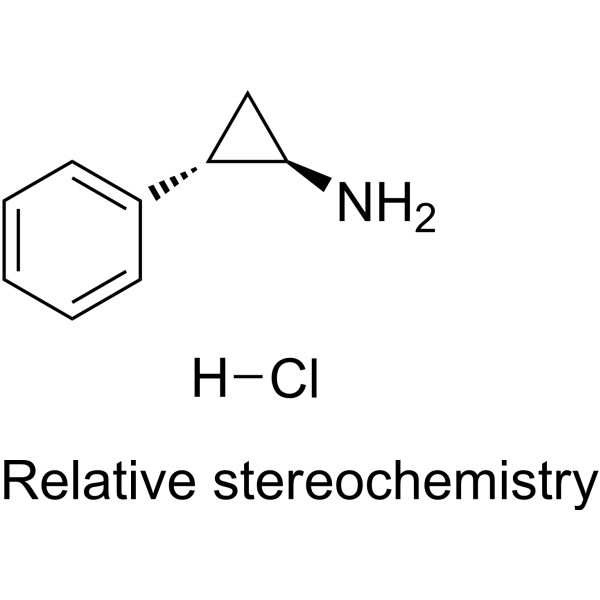
- HY-N8090
-
|
|
Others
|
Inflammation/Immunology
|
|
(3β,7β,12β,20Z)-3,7,12-Trihydroxy-11,15,23-trioxo-lanost-8,20-dien-26-oic acid, a lanostane triterpenoids, exhibits obvious NO inhibitory activity on n LPS-induced BV-2 microglia cells with an IC50 of 9.55 uM. (3β,7β,12β,20Z)-3,7,12-Trihydroxy-11,15,23-trioxo-lanost-8,20-dien-26-oic acid has anti-inflammatory activities .
|
-

- HY-P1047
-
|
[Pro18, Asp21] β-Amyloid (17-21)
|
Amyloid-β
|
Neurological Disease
|
|
β-Sheet Breaker Peptide iAβ5 is a potent degrader of cerebral amyloid-beta (Abeta). Abeta deposition is associatied with the Alzheimer disease (AD), due to its related toxicity linked to its beta-sheet conformation and/or aggregation. β-Sheet Breaker Peptide iAβ5 reproducibly induces in vivo disassembly of fibrillar amyloid deposits. Thus, β-Sheet Breaker Peptide iAβ5 prevents and/or reverses neuronal shrinkage caused by Abeta, and reduces the extent of interleukin-1beta positive microglia-like cells that surround the Abeta deposits. β-Sheet Breaker Peptide iAβ5 reduces the size and/or number of cerebral amyloid plaques in AD. β-Sheet Breaker Peptide iAβ5 labeled by hydrophobic benzyl alcohol (HBA) tag, can be used for quantitative assay by showing vivid blue color under acidic conditions .
|
-
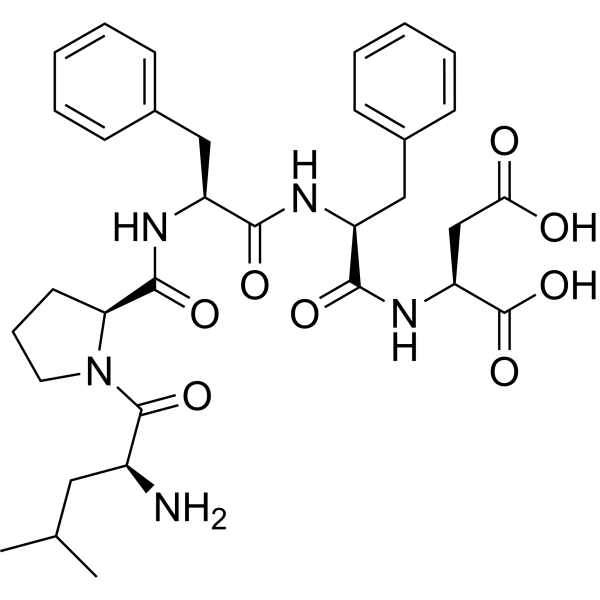
| Cat. No. |
Product Name |
Target |
Research Area |
-
- HY-P5762
-
|
PNX-14
|
GnRH Receptor
|
Neurological Disease
|
|
Phoenixin-14 (PNX-14) is one of the endogenous active isoform, and generates anxiolytic effect via the activation of the AHA GnRH system in mice. Phoenixin-14 inhibits ischemia/reperfusion-induced cytotoxicity in microglia .
|
-
- HY-P1242
-
|
|
Peptides
|
Inflammation/Immunology
|
|
NEP(1-40) is a Nogo-66 receptor (NgR) antagonist peptide, reversing the injury-induced shift in distribution of microglia morphologies by limiting myelin-based inhibition .
|
-
- HY-P1242A
-
|
|
Peptides
|
Inflammation/Immunology
|
|
NEP(1-40) TFA is a Nogo-66 receptor (NgR) antagonist peptide, reversing the injury-induced shift in distribution of microglia morphologies by limiting myelin-based inhibition .
|
-
- HY-P5544A
-
|
N-Acetylmuramyl-L-Ala-γ-D-Glu-meso-diaminopimelic acid TFA
|
NOD-like Receptor (NLR)
|
Others
|
|
M-TriDAP (N-Acetylmuramyl-L-Ala-γ-D-Glu-meso-diaminopimelic acid) TFA is a NOD1/2 agoist and biological active peptide .
|
-
- HY-P5121
-
|
|
Peptides
|
Cardiovascular Disease
|
|
γ-Fibrinogen377-395 is a fibrinogen-derived inhibitory peptide, as well as fibrinogen epitope. γ-Fibrinogen377-395 blocks microglia activation and inhibits fibrin-Mac-1 interactions in vitro, and suppresses experimental autoimmune encephalomyelitis (EAE) in mice in vivo. γ-Fibrinogen377-395 can be used for research in multiple sclerosis (MS), and other neuroinflammatory diseases associated with blood-brain barrier disruption and microglia activation .
|
-
- HY-P5121A
-
|
|
Peptides
|
Cardiovascular Disease
|
|
γ-Fibrinogen377-395 TFA is a fibrinogen-derived inhibitory peptide, as well as fibrinogen epitope. γ-Fibrinogen377-395 TFA blocks microglia activation and inhibits fibrin-Mac-1 interactions in vitro, and suppresses experimental autoimmune encephalomyelitis (EAE) in mice in vivo. γ-Fibrinogen377-395 TFA can be used for research in multiple sclerosis (MS), and other neuroinflammatory diseases associated with blood-brain barrier disruption and microglia activation .
|
-
- HY-P3908
-
|
|
Amyloid-β
|
Neurological Disease
|
|
FITC-β-Ala-Amyloid β-Protein (1-42) ammonium is a FITC tagged Aβ1-42 monomer peptide. Aβ1-42 plays a key role in the pathogenesis of Alzheimer’s disease .
|
-
- HY-P1047
-
|
[Pro18, Asp21] β-Amyloid (17-21)
|
Amyloid-β
|
Neurological Disease
|
|
β-Sheet Breaker Peptide iAβ5 is a potent degrader of cerebral amyloid-beta (Abeta). Abeta deposition is associatied with the Alzheimer disease (AD), due to its related toxicity linked to its beta-sheet conformation and/or aggregation. β-Sheet Breaker Peptide iAβ5 reproducibly induces in vivo disassembly of fibrillar amyloid deposits. Thus, β-Sheet Breaker Peptide iAβ5 prevents and/or reverses neuronal shrinkage caused by Abeta, and reduces the extent of interleukin-1beta positive microglia-like cells that surround the Abeta deposits. β-Sheet Breaker Peptide iAβ5 reduces the size and/or number of cerebral amyloid plaques in AD. β-Sheet Breaker Peptide iAβ5 labeled by hydrophobic benzyl alcohol (HBA) tag, can be used for quantitative assay by showing vivid blue color under acidic conditions .
|
| Cat. No. |
Product Name |
Category |
Target |
Chemical Structure |
-
- HY-N3915
-
-

-
- HY-W670564A
-
-

-
- HY-N10458
-
|
|
Sesquiterpenes
|
NF-κB
|
|
Asperbisabolane L, a sesquiterpenoid, exerts the anti-inflammatory activity by inhibiting the NF-κB-activated pathway. Asperbisabolane L inhibits the translocation of NF-κB from cytoplasm to the nucleus. Asperbisabolane L also inhibits NO production in LPS-activated BV-2 microglia cells .
|
-

-
- HY-N7018
-
-

-
- HY-N10782
-
-

-
- HY-N9675
-
-

-
- HY-N6261
-
-

-
- HY-N8104
-
-

-
- HY-111815A
-
-

-
- HY-111815
-
-

-
- HY-N0911
-
-

-
- HY-N3814
-
-

-
- HY-N1485
-
|
Astramembrangenin; Cyclosieversigenin
|
Triterpenes
Structural Classification
other families
Terpenoids
Source classification
Plants
|
Telomerase
|
|
Cycloastragenol (Astramembrangenin), the active form of astragaloside IV, has anti-oxidant, anti-inflammatory, anti-aging, anti-apoptotic, and cardiovascular protective effects. Cycloastragenol is a potent telomerase activator and can lengthen telomeres. Cycloastragenol alleviates age-related bone loss and improves bone microstructure and biomechanical properties .
|
-

-
- HY-N8090
-
|
|
Triterpenes
Microorganisms
Classification of Application Fields
Terpenoids
Source classification
Disease Research Fields
Inflammation/Immunology
|
Others
|
|
(3β,7β,12β,20Z)-3,7,12-Trihydroxy-11,15,23-trioxo-lanost-8,20-dien-26-oic acid, a lanostane triterpenoids, exhibits obvious NO inhibitory activity on n LPS-induced BV-2 microglia cells with an IC50 of 9.55 uM. (3β,7β,12β,20Z)-3,7,12-Trihydroxy-11,15,23-trioxo-lanost-8,20-dien-26-oic acid has anti-inflammatory activities .
|
-

| Cat. No. |
Product Name |
Chemical Structure |
-
- HY-B0763S1
-
|
|
|
Ibudilast-d7 is the deuterium labeled Ibudilast. Ibudilast (KC-404; AV-411; MN-166) is a cyclic AMP phosphodiesterase (PDE) inhibitor. Ibudilast has platelet anti-aggregatory effects. Ibudilast can be used for the research of asthma for its inhibitory effects on tracheal smooth muscle contractility. Ibudilast may be a useful neuroprotective and anti-dementia agent counteracting neurotoxicity in activated microglia[1].
|
-

-
- HY-B0763S2
-
|
|
|
Ibudilast-d7-1 is the deuterium labeled Ibudilast[1]. Ibudilast (KC-404;AV-411;MN-166) is a cyclic AMP phosphodiesterase (PDE) inhibitor. Ibudilast has platelet anti-aggregatory effects. Ibudilast can be used for the research of asthma for its inhibitory effects on tracheal smooth muscle contractility. Ibudilast may be a useful neuroprotective and anti-dementia agent counteracting neurotoxicity in activated microglia[2].
|
-

Your information is safe with us. * Required Fields.
Inquiry Information
- Product Name:
- Cat. No.:
- Quantity:
- MCE Japan Authorized Agent:


































































